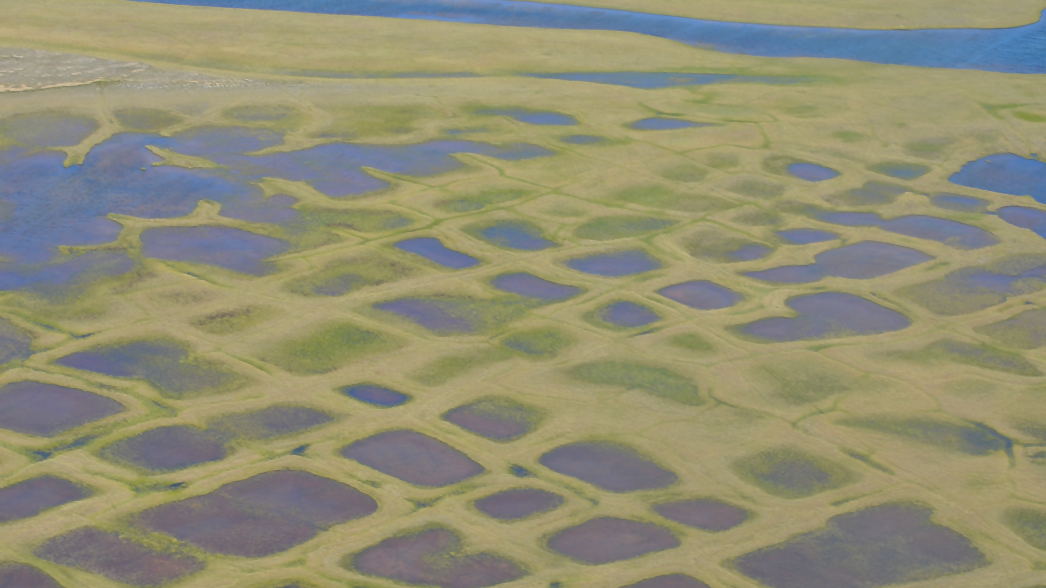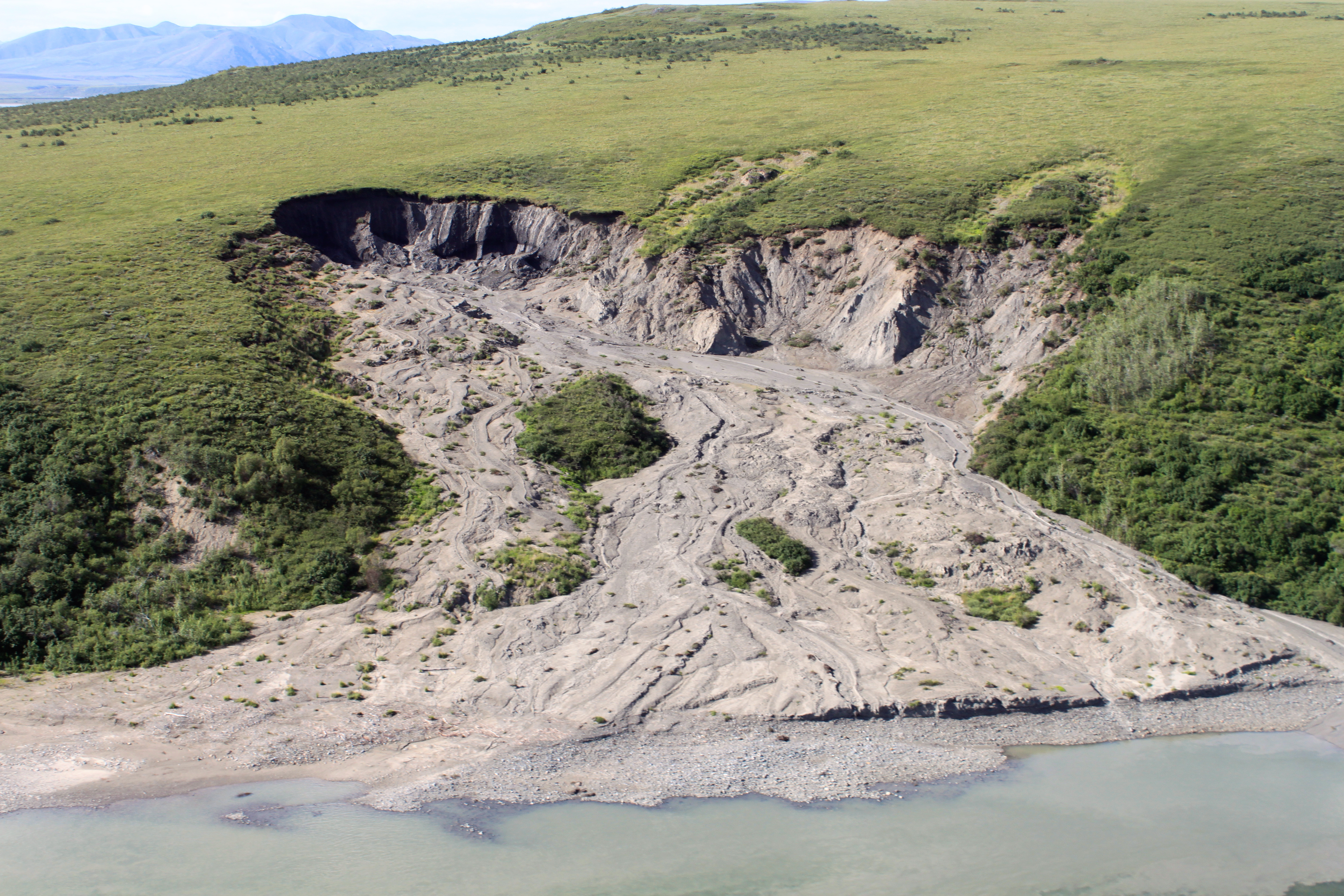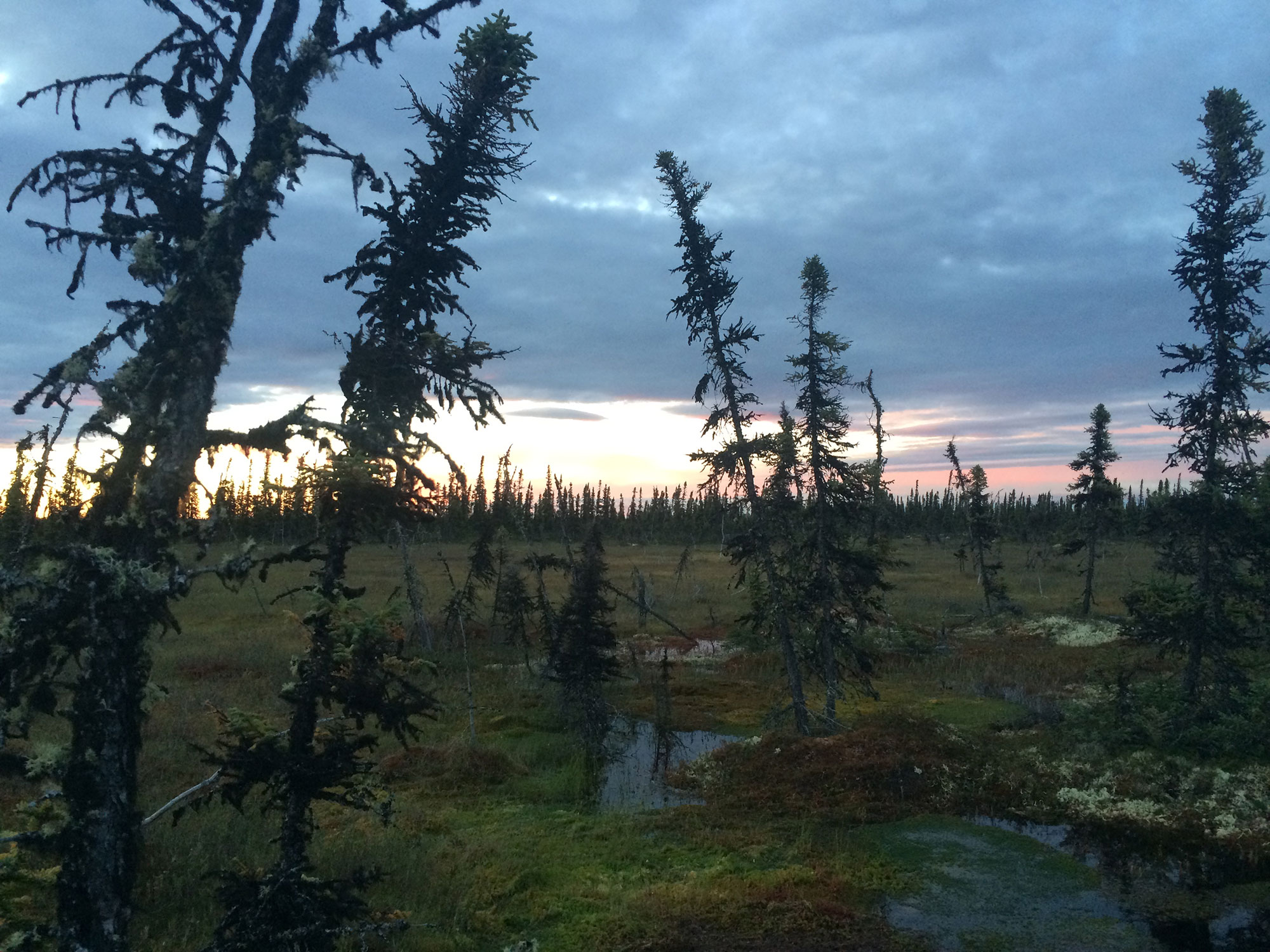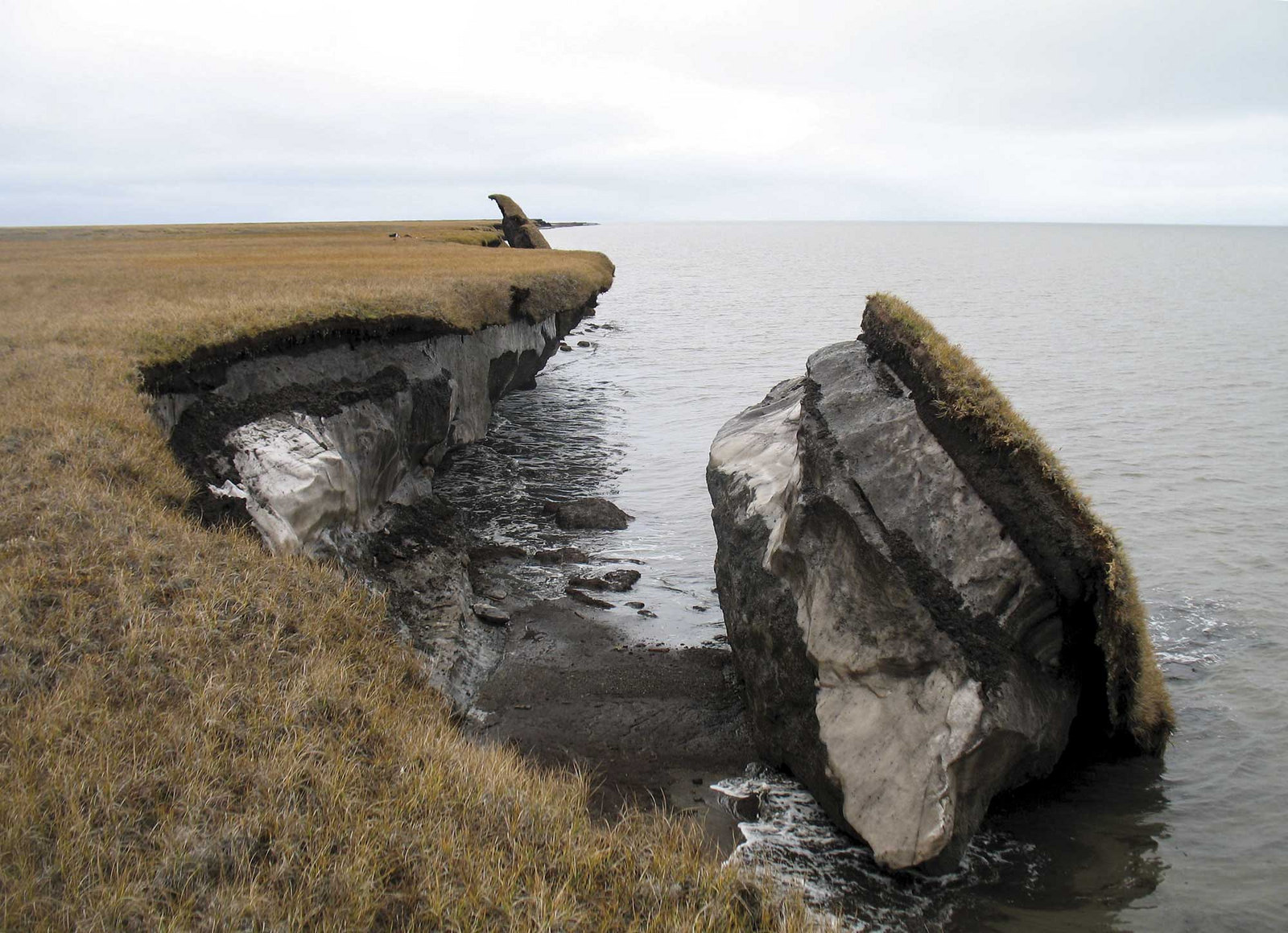Warmer, shorter winters have turned permafrost regions from carbon sink to source
Scientists aren't sure exactly when the switch occurred, because until recently winter monitoring has been limited.

Permafrost holds within it more carbon than has ever been produced by humans. And for a long time, that carbon was safely locked in the deep freeze of Arctic winters.
But that is no longer so, according to new research.
Warmer and shorter Arctic winters are triggering changes beneath the ground that are pumping more carbon dioxide up into the area — more than is absorbed in the summer growing season — according to a study newly published in the journal Nature Climate Change.
The warming has converted the permafrost terrain, which occupies about a quarter of the northern hemisphere, from a global carbon sink to a global carbon source, according to the study, which was conducted by scientists from more than 50 institutions.
And as human-produced carbon emissions continue and Earth keeps warming, the release of carbon dioxide from warming permafrost will accelerate, the study said.
“It’s pretty depressing, actually,” said Eugenie Euskirchen of the University of Alaska Fairbanks Institute of Arctic Biology, one of the study’s 75 co-authors.
Using on-site findings from around the Arctic, the study concludes that permafrost soils of the world’s boreal and tundra regions give off 1,662 teragrams of carbon every winter. Those losses occur during the period from October to April when snow is on the ground and photosynthesis is absent or negligible, and they outweigh the carbon uptake of 1,032 teragrams during the summer growing season. (A teragram is a megatonne or 1 million metric tons.)

Permafrost and the active layer above it — the layer of ground that thaws in summer and refreezes in winter — holds solid carbon in the form of decomposed plant and animal matter accumulated over time, in some cases over thousands of years.
When microbes consume that solid matter, they process it into gaseous carbon dioxide. The warmer the soil is, the more active the microbes become. Permafrost thaw enables a burst of microbial activity and carbon gas release. But microbes can speed their activity even when soil is not thawed.
As warming continues, permafrost soils will release more carbon dioxide, but human actions will affect the extent to which that happens, the study said.
If human-caused emissions are held in check, the winter respiration of carbon dioxide from permafrost will increase by about 17 percent by the end of the century, the study said. That calculation is based on a scenario of increased human emissions until about 2040, followed by a decline — the Representative Concentration Pathways 4.5 scenario, which roughly parallels the commitments made in the Paris Agreement.
But if global carbon emissions continue on their current path — the RCP 8.5 scenario — winter permafrost respiration of carbon dioxide is expected to increase by 41 percent by the end of the century, the study said.
“Given the rapid pace of warming in the Arctic there is an urgent need to expand monitoring networks and to tightly link these observations to models to help guide decision making,” Sue Natali, Arctic program director for the Woods Hole Research Center and the lead author of the study, said in a statement “This study highlights the need to greatly reduce fossil fuel emissions in order to keep permafrost region carbon from entering into the atmosphere.”
The study was led by Woods Hole in cooperation with the Permafrost Carbon Network. It was funded by NASA’s Arctic Boreal Vulnerability Experiment program, known as ABoVE.
The study’s calculations are limited to the carbon dioxide released through microbial activities in warming soils. It used data from more than 100 high-latitude sites and more than 1,000 aggregated monthly fluxes. It found variations depending on soil type, vegetation, water content and other factors. By far, the most important factor influencing carbon-dioxide emissions was soil temperature, it said.
It is unclear when the Arctic permafrost regions crossed the threshold from sink to source, Euskirchen said.
“The winter emissions have always been occurring,” she said. “We’ve only been able to document them recently with better equipment.”

Probably the threshold was crossed first in the boreal regions, where temperatures are closer to the freeze-thaw border, she said. The Arctic tundra has probably lagged but is also being converted, she said.
A warming-caused greening trend that is spreading more plants north cannot counter the increased winter carbon respiration from the warming soils, Euskirchen said.
“The plants, I really don’t see them catching up,” she said. “There’s just no way they’re going to be able to offset that loss.”
Tundra plants are small, even if they are growing in thicker concentrations and bigger than in the past, she said. And the high-latitude daylight restrictions are unchanged, creating a barrier to extended photosynthesis, she added.
The warming that is reaching into the soils and stimulating more carbon respiration is especially noticeable in the fall shoulder season, Euskirchen said. Alaska in 2019 has provided several examples, she said. “We can see it this year very clearly,” she said.
In Fairbanks, the talk of the town was the lack of a “white Halloween,” or the absence of snow on Oct. 31, she said. This was the fourth consecutive snow-free Halloween, according to the Alaska Center for Climate Assessment and Policy at UAF.
Utqiagvik, the northernmost community in the United States, just ended its second-warmest October on record, with temperatures 11.6 degrees Fahrenheit above normal, according to the ACCAP. In Kaktovik on the Beaufort Sea coast in northeastern Alaska, the average October temperature was 9 degrees above normal, according to the ACCAP. In Kotzebue, where average monthly temperatures were 6.6 degrees above normal, October was the 26th consecutive warmer-than-normal month, according to the ACCAP.
At one site north of the UAF-operated Toolik Field Station on the North Slope, the soil has not been freezing until January, Euskirchen said.
The new study’s calculations do not include releases of methane, a far more potent but shorter-lived greenhouse gas that is also released by thawing permafrost.
And the calculations do not include carbon dioxide releases caused by wildfire, landslides or other abrupt disturbances to the permafrost habitat.
Those additional releases can be significant.
Among the other big sources of carbon gases yet to be quantified are those released from rapidly eroding Arctic coastlines, according to a new study published in Geophysical Research Letters.
The Arctic holds 34 percent of the world’s coastlines, but the role that their erosion plays in the carbon cycle has been overlooked, said the study, by scientists from the University of Amsterdam and the Alfred Wegener Institute in Germany and other German institutions.

Using laboratory tests to mimic seawater encroachment on permafrost coasts, they found that a gram of coastline eroded at 4 degrees Celsius produced an average 4.3 milligrams of carbon dioxide, similar to or greater than measured carbon releases inland in Alaska and Siberia. That is a sign of future trouble, the study said.
“We expect that coastal CO2 production further increases due to the combined effects of accelerated coastal erosion, higher sea surface temperatures, and a longer open‐water season which increases the time when cliffs are exposed to wave action and storm events,” it said. “The high pace of environmental change along Arctic permafrost coasts could catalyze and increase the production of CO2 in the coastal realm and thus strengthen permafrost carbon cycling.”
Another recent study, also funded by the ABoVe program, examined a region of the Northwest Territory that was burned by record-breaking wildfires in 2014. It concluded that increased frequency of wildfire, which has occurred in the boreal forest and concluded that increased wildfire frequency itself has the capability of transforming the boreal forest from carbon sink to carbon source.